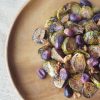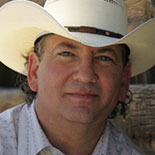
Double Benefit of Shea Butter – Supports Your Skin and Other Women
By Karen Shepard | 0 Comments | Posted 12/28/2014
Winter is here. For a lot of us that means colder, wetter weather, and dryer skin. If you are looking for a superior moisturizer that also has healing properties, check out Shea. Here are some basic things you might want to know about this healthy healing cream.
Shea butter comes from the Shea nut tree more commonly known as the Karite nut or Mangifolia tree. The name literally means Tree Of Life. Its distribution is exclusive to Sub Saharan West Africa, – where it grows in 19 countries.
It is for the most part hand picked and processed, usually by women and is a major economic and life staple in those communities where it is collected. It can take 20-30 hours to extract just 2.2 lbs, but this slow traditional process allows the butter to retain more of its nutritional, skin care and medicinal properties. When it is finished, its natural moisturizing properties very closely resemble the moisture your own body secrets.
Shea butter’s phenolics, have anti-aging properties similar to green tea. It contains vitamins E and A which help minimize the effects of sun and environment. It also contains cinnamic acid which acts like Alpha Hydroxy, meaning it penetrates and helps with cell regeneration under the skin. – But what makes Shea butter truly better than other seed oils is its restorative or healing power. The healing fraction or properties of Shea Butter can be up to 17% in good quality Shea Butter. (In other seed oils the range is around 1% or lower.)
It’s moisturizing and healing qualities make it a great “go to” cream, for rashes, wrinkles, windburn, sunburn, acne, insect bites, wounds, stretch-marks, psoriasis and eczema. It is also used topically to help reduce inflammation in joints and to ease muscle fatigue. Studies have shown it to be effective as a nasal decongestant due to its ability to reduce inflammation. In Africa women chew the nut to relieve stomach upsets and on babies to encourage soft skin and deep sleep.
Though it originated in the Sub Saharan, Shea butter has been around, travelling in the caravans of Cleopatra, Nefertiti, and the Queen of Sheba. Today it’s known as “Women’s Gold,” because of the employment and income it provides for rural women and farmers in those regions. When you buy Shea butter for yourself or as a gift you can make life better for someone, not just at the holidays, but all year long.
What to look for:
Shea butter is classified into five grades:
- A – raw or unrefined, extracted using water;
- B – refined;
- C – highly refined and extracted with petroleum based solvents such as hexane;
- D – lowest uncontaminated grade;
- E – with contaminants.
Grade A Shea butter retains the most cinnamic acid or healing properties, and the most natural vitamins, especially vitamins A and E, which are partially lost in the other grades. So in purchasing, look for the highest quality Shea Butter, classified as “grade A.”
At room temp natural unrefined Shea Butter should spread easily. It is a creamy beige color, not yellow grey green dark brown or white. It should smell mildly nutty or smoky. This is important because if it has an added scent or has been processed in any way, it is degraded.
Shameless Plug: There are endless places to buy, but If you are looking for organic, fair trade, unprocessed Shea Butter, Ten Thousand Villages is one supplier that delivers on all three. Purchasing from The Ele Agbe Company it sells a high quality product and provides, jobs, training and tools for women and under educated youth.
Ten Thousand Villages – The Ele Agbe Company
Note: There are some people with skin sensitivities that have an adverse reaction to Shea Butter. The cinnamic acid and cinnamic aldehyde can cause contact urticaria, a skin irritation which results in a reaction of the skin or mucous membrane. It can be as subtle as itching and redness, or as severe as wealts or flares on the skin. As little as 0.01% cinnamic aldehyde can produce this result in sensitive people.
Shea butter is also used in cooking, and as a substitute for cocoa butter in European countries in products such as chocolate. Lower grades are used in hundreds of other products such as a waterproofing wax, hairdressing, candle-making, and many more.
Home Guides – Shea butter benefits
Shea-Butter-What-It-Is-Why-It-Works
Peek inside a shea butter facility inUganda
The shea butter economy -big money and exploitation


 Contact us
Contact us



























